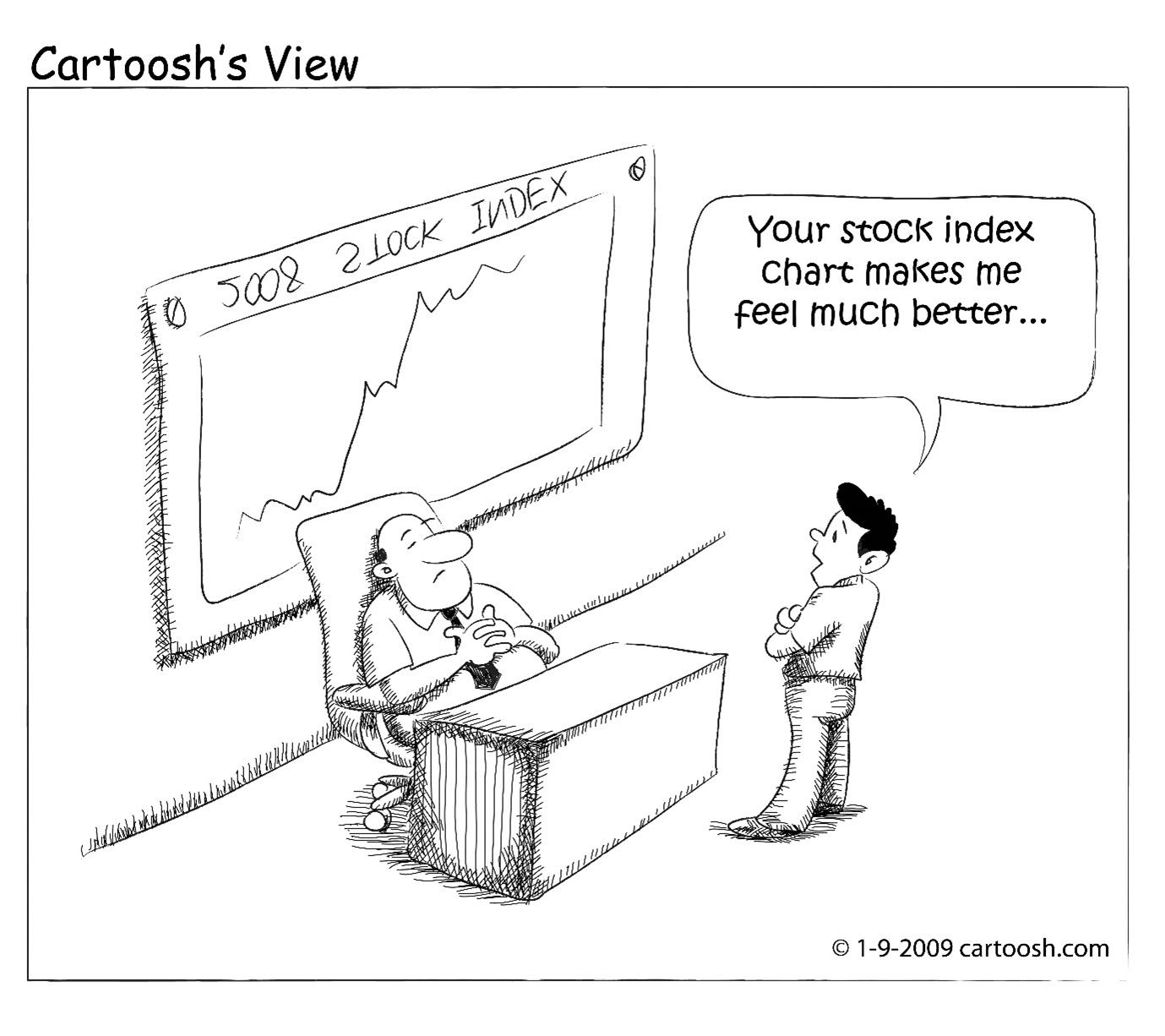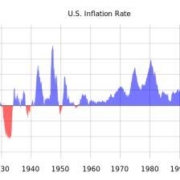The Costs of Compounding: Exploitation and Collapse
by Koenraad Priels

If debt is any indicator, the current financial system isn’t working out for most of the world, at the individual or national level (Patrick Oben Ministries).
The global financial system operates like a cancer, metastasizing throughout our economy and society. Its malignant core is a simple yet devastating formula: PL – PR + I, principal loaned – principal repaid + interest = an escalating debt trap that necessitates economic growth. This equation is familiar to anyone who has taken out a loan. It demonstrates the fatal flaw in our financial architecture, which makes a steady state economy impossible by design.
Most of us don’t bat an eye at this formula, but it transforms banking into a Ponzi scheme, ensnaring the real economy in a web of ever-growing, interest-bearing debt. The stock market and financial products further inflate claims on the real economy. This creates a socio-economic operating system that is ecologically unsustainable and ethically indefensible.
Until we crack this global finance code, a steady state economy will remain elusive. We must reform the following growth drivers: interest compounding, the stock market, and proliferating financial products. Only by excising these financial cancers can we hope to create an economy that operates within Earth’s ecological limits and respects human rights.
How Compounding Crept into Society
The beast of compounding entered human societies around five thousand years ago in ancient Sumer. These late Bronze Age societies were organized around “palace economies” with centralized authorities that regulated economic activity. They developed credit accounting systems, including the accumulation of costs to be settled at harvest time.
From these credit practices emerged the charging of interest and compound interest. These wealth-concentrating mechanisms would haunt humanity for millennia. At the core of a financial system geared toward exponential growth, they gave rise to our contemporary predicament.

A marble relief from 200 CE depicting slaves in Rome (Wikimedia Commons).
Ancient Sumerian societies, however, practiced a crucial policy that set them apart from later creditor-dominated civilizations: debt cancellation. When harvests failed or debts grew too large for the real economy to service, these societies would cancel excessive debts. (When money wasn’t warranted, in other words, neither was debt.) This practice prevented escalating poverty, avoided debt slavery, and restored economic balance.
In stark contrast, Greek and Roman societies fully unleashed the power of compounding interest. This shift led to rampant debt slavery, colonial expansionism to fuel economic growth, and the accumulation of profits to service interest-bearing debts. The transition from debt cancellation to enforced collection of debt marked the beginning of a long history of systemic violence and exploitation. Though these societies’ unwieldy debt imperatives eventually contributed to their collapse, their legacy continues to shape our global economy.
Money’s Misrepresentation: The Devil Is in the System
“Money, being naturally barren, to make it breed money is preposterous and a perversion from the end of its institution, which was only to serve the purpose of exchange and not of increase… Men called bankers we shall hate, for they enrich themselves while doing nothing.” – Aristotle, Politics
The misrepresentation of money is at the heart of our economic malaise. It occurs when we treat money both as a measure of value and as a commodity (for example, when we charge interest on a loan), leading to contradictions that undermine its effectiveness. Recent work by systems scientists Marc Gauvin and Sergio Dominguez highlights that these two roles are mutually exclusive. Just as one cannot possess a “kilo of kilos,” conflating money’s functions creates a fundamental error in our understanding of value.
This conflation has significant consequences. It incentivizes contemporary banks to generate money “from nothing,” as interest-bearing credit. This interest creates claims on real value without producing any actual goods or services. In an interest-based financial system, the world must produce ever more—mine deeper, harvest more, build bigger—not to repay lenders the value that was borrowed, using money as a measurement, but to pay for the money itself, as a commodity. The borrowing majority must service increasing claims issued by a predatory rentier minority.
This weaponization of the monetary system for systemic exploitation illustrates how money’s misrepresentation enables global rentier capitalism. This system enables and rewards wealth accumulation for a small minority, perpetuating ecological overshoot. To achieve a steady state economy, we must utilize limited time, energy, and resources efficiently to promote well-being for all within ecologically sustainable limits. Yet the current system, in which economic growth primarily serves the obscene wealth accumulation of a rentier class, is inherently inefficient.
The architecture of global rentier capitalism resembles a casino built atop a bottomless pit. The casino’s foundation is the banking system, which creates most of the money supply through loans. Factor in the stock market, and the casino becomes a skyscraper. The stock market operates as an institutionalized mechanism for plundering resources and dividing profits among the wealthy. It fuels privatization and corporatization that dispossesses the public majority of natural resources, effectively transferring property rights to shareholders.
And financial products, such as derivatives, securitized products, and synthetic financial instruments, are the casino’s adornments. They are the lush furniture and precious artwork that fill its room. These products represent fictitious capital, causing claims on the real economy to inflate unchecked. As we face mounting global tensions fueled by debt and resource scarcity, it is crucial to question how such an exploitative system can be deemed legal or acceptable. We must renovate—or rebuild—our financial architecture to promote transformative justice and steady statesmanship .
Correcting Money’s Misrepresentation: Financial Stability for a Steady State Economy
Money is supposed to be a means of exchange, a unit of account, and a store of value. Without interest, money would be purely representational, eliminating the ability to create value claims “out of nothing.” If governments outlawed interest, the fundamental equation would shift from PL – PR + I = necessary growth to pay interest, to PL – PR = 0, where principal remains balanced without interest accumulation. Financial institutions could charge a small administrative fee to sustain themselves.

We’ve come to see the stock market as an unstoppable force of nature. Participation is encouraged as financially sensible, even beneficial to society (Cartoosh, Wikimedia Commons).
This approach would promote the use of money strictly as an annotation of value, not as a tradable commodity. It would facilitate fair exchanges without wealth concentration. At the same time, outlawing interest would prevent exponential debt growth. It would remove the need for perpetual economic expansion and enable a genuine steady state economy that supports human well-being within planetary ecological limits. Implementing such a system requires radical but necessary changes: reforming banking regulations, restructuring financial markets, and renegotiating existing debt structures.
We have normalized exploitation in our financial systems. Because of this, we look on complacently as inequalities deepen and the environment is degraded. We possess the potential for transformative change, but the first step is to acknowledge the flaws in financial mechanisms—interest-bearing loans, the stock market, financial products—that we’ve grown to see as natural and inevitable. Only then can we seek alternatives.
The path forward requires open dialogue and collective action. We must together assess how we arrived at this point and what steps we can take to challenge the status quo. The current system may seem entrenched, but history shows that change is possible when people unite in pursuit of justice and sustainability.
 Koenraad Priels is a social-ecological activist and independent researcher.
Koenraad Priels is a social-ecological activist and independent researcher.






I’ve just read a book called ‘Can we be Happier by Richard Layard which has another explanation for growth- we prioritize it because it makes everyone better off. The real aim of society/economy should be to increase happiness and especially reduce misery. The best way to achieve this is not through giving people more money but to help their mental state. So we should measure happiness’ not gdp. Then we wouldn’t need growth. This seems a much better idea than getting g rid of debt and compound interest.
Excellent topic!
Sarced Economics, the book and this short video, provides interesting possibilities and details on this line of thinking.
https://youtu.be/-GoFzU3cRE4?si=KJANZ3G4H5gfZU9h
Risk and reward for risk taking may be a genuine justification of interest. The lender might lose so interest is the reward when things work out. That said for ecological reasons that reward should only equate to the extent of probable losses. Maybe the concept of interest and private wealth gathering can be switched over to a global landscape of commonly owned producers and commonly owned funding bodies/ lenders freely competing with one another to deliver on the sustainable world that we need. In this scenario lending to scale up may help the required exponential growth of a not for profit sector to replace the growth economy. And you’re right real interest at zero after a risk charge seems right for continued sustainability.
Koenraad: You raise an important topic just as I was re-reading Soddy’s ‘Wealth, Virtual Wealth, and Debt’. The advent of modern money was a turning point in human history – first created 5,000 years ago by a central authority, hand-in-hand with taxation, as an ingenious means of transferring real resources from the private to the public sector without the need for tyranny.
Like so many innovations which changed the course of history, modern money has its desirable and undesirable features. A complex, sophisticated economy cannot do without it. The same can be said of modern markets. More needs to be done by governments to quell their undesirable features. Unfortunately, the reconfiguring of economies by governments has done the opposite – institutionalised chrematistics (neoliberalism).
You have highlighted an undesirable feature of modern money (usury), which extended the privilege once confined to the currency-issuer – the ability to acquire real resources without surrendering real resources – to not only banks, but to most people in the Western World. If you possess interest-bearing financial assets or have income regularly syphoned into a pension fund, you are enjoying the benefits of a conjuring trick made possible by few restrictions on what one can do with their modern money and the unearned returns on them.
The conjuring trick is only possible if other people receive less modern money than the value of the real wealth they produce or unwillingly surrender. Exploiting this feature of modern money has its limits but they are pushed back by natural capital depletion (future generations pay a cost) and cheap labour. The latter was once moderated by strong labour unions until the advent of globalisation – the shifting of capital to low-wage locations (underpaid Third World workers pay a cost) and waves of immigration (First World workers pay a cost).
However, it is incorrect to say that interest compels growth – its consequences are distributional.
Koenraad: It is incorrect to say that interest compels growth – its consequences are distributional and only require increases in GDP should the receivers of interest payments (creditors) choose to spend the interest payments in future periods on new goods and services.
The PL – PR + I in your blog piece is taken out of context. If PL = PR in each time period, then I, as an increase in financial claims on real resources (wealth), appears to come from ‘nowhere’. However, it most certainly comes from somewhere and we can identify where once all financial injections and leakages are taken into account.
Over any time period, financial injections must equal financial leakages. If we ignore the external sector (exports and imports), we are left with the domestic currency-issuing and currency-using sectors. Your equation is confined to the currency-using sector.
If we include the currency-issuing sector (central government) and assume that all ‘savings’ by currency-users (unpent after-tax income) is used to repay the principal (PR) and interest on loans (I), we have:
G + PL (financial injections) = T + PR + I (financial leakages), where G = spending of new base money by the currency-issuer; T = taxation (destruction of base money) by the currency-issuer.
Rearranged, we get:
(G – T) = [(PR + I) – PL]
If PL = PR, we are left with:
G – T = I
In other words, the currency-issuer’s net fiscal injection (falsely referred to as a budget deficit) provides the savings that borrowers require to pay the interest they owe to creditors (I). The borrowed credit money (PL), when spent (and which becomes some of the nation’s income of which borrowers receive a portion in the form of wages and profits), provides the income that borrowers require to repay the principal they owe to creditors (PR). PL creates ‘soft’ savings in the sense that they are destroyed upon repayment of the principal.
Koenraad: It is incorrect to say that interest compels growth – its consequences are distributional.
A net fiscal injection creates ‘hard’ savings in the sense that they are permanent unless destroyed by additional taxation. Hard savings end up in the hands of those who receive the interest payments, not the people who produce real wealth. This is the distributional effect of interest.
Assuming no price inflation, the values for each variable could remain the same in every period, in which case GDP would also remain the same. However, the financial claims of creditors on GDP would increase as the interest (I) received in each period accumulates. This is the other problem identified by Soddy – rising financial claims on real wealth enjoyed by a section of society even though accumulating claims do not rot (unlike real wealth) and cost nothing to maintain. The number of beneficiaries – mostly located in the First World – has risen enormously by roping Third World workers into the chrematistic domain through globalisation. The Third World also makes the greatest ecological sacrifices to support this rigged system.
Should the receivers of interest payments spend them on new goods and services, and G and PL remain the same, GDP will rise. But they need not – they could simply accumulate financial claims on real wealth (i.e., not spend them), in which case GDP would not rise despite permissible interest payments. GDP increases over time for all sorts of reasons, most of which would not be eliminated by prohibiting interest payments. But the exploitation of modern money (and modern markets) is what allows some people to become billionaires while obeying the law in a suit and tie, even when GDP is not growing. This must be corrected. It’s not on the radar of many heterodox economists because they focus on the distribution of factor payments out of GDP – important, yes – but ignore what happens to money syphoned out of the real economy into financial and asset markets.
Thank you for these comments, Philip, they have my wheels turning! It makes sense that when the borrower pays interest to the lender, that transaction is not counted in GDP. However, assuming the borrower engaged in productive economic activity to earn the money necessary to pay the interest, the charging of interest did necessitate GDP growth in a roundabout way, no?
Thanks Alex. Your question is not an unreasonable one. The answer is not straightforward, not that I’m suggesting you wouldn’t be capable of understanding it.
Bear with me. I pointed out that financial injections must equal financial leakages (which will soon become clear). In the simplified example I gave (no external sector), the financial injections were G (govt spending of new base money) and PL (private sector spending of new credit money). The financial leakages were T (govt taxation) and PR and I (after-tax income saved to repay borrowed money and to pay the interest bill). Thus:
G + PL = T + PR + I
Rearranged in accordance with the two main sectors of the economy (the currency-issuing central govt and currency-users), we get:
G – T = [(PR + I) – PL]
As for GDP, one way to arrive at its value is:
GDP = financial injections x expenditure multiplier
Therefore: GDP = (G + PL) x expenditure multiplier
I won’t go into too much detail about the exp multiplier, but if you are not familiar with it, it works the following way. We start with the spending financed by G + PL (all spending begins with financial injections). This spending is received as income by the various factors of production (FofP). Some of it is taxed away. Some of the remainder is saved. In this simple example, all savings contribute towards the payment of PR + I. The rest is re-spent, which becomes another round of income received by the FofP. Some of this is taxed away and some of the after-tax income is saved. With each new round of spending → income → tax → saving → spending, the amounts decline until they are zero. At this point, all additional spending stops (GDP ceases to increase). We reach homeostasis.
At homeostasis, the sum of the financial leakages from each round of spending (T + PR + I) equals the initial financial injections (i.e., it takes the various rounds of spending and income for the financial leakages to accumulate to the same value of the financial injections).
Dear Philip, thank you for your comment. Your analysis, however, ignores some of the main issues of how interest actually works in our current global financial system.
I address the current financial architecture, which is basically a Ponzi-scheme of insoluble debt. You can not ignore this context.
Of course, you make a valid point on how it matters what is done with the interest. But if interest raises the cost of living needlessly, there is always unnecessary time and energy needed to service its costs, which is contrary to real economic efficiency in a steady state economy.
Moreover, it is obvious that interest is completely unnecessary overhead, when money is an accurate and passive measure of value. This is therefore the solution that allows for systemic stability.
The size of the expenditure multiplier (and the number of times the same injected money changes hands between buyers and sellers) depends on the extent to which income generated by each round of spending leaks from the system. This depends on the tax rate (% of income taxed = t) and the savings rate (% of after-tax income not spent). Higher tax and savings rates mean more of each round of income leaks from the system. The exp multiplier is correspondingly smaller (and the number of times the same injected money changes hands is fewer). Consequently, the GDP generated by the initial financial injections is smaller than with a larger exp multiplier.
I’m now going to go through four situations.
Situation 1) – Interest is paid on borrowed money and the receivers of interest (I) don’t spend it (they save it); PL = PR (they cancel out in the injections = leakages formula)
We have:
GDP = (G + PL) x expenditure multiplier (let’s assume that GDP = 100)
G – T = I (Important: the govt’s net fiscal injection finances the savings used to pay the interest bill)
***
Situation 2) – No interest is paid on borrowed money (just the principal is repaid); PL = PR
We have:
GDP = (G + PL) x expenditure multiplier
G – T = 0 (Important: the govt runs a balanced ‘budget’ – there is no need for a net fiscal injection, since no savings is required (needs to be financed) to pay zero interest)
What is the difference between 1) and 2)? Because borrowers of credit money don’t have to pay interest, they don’t have to save as much of their after-tax income (lower savings rate). Consequently, the exp multiplier is larger. Hence, GDP is larger for the same G + PL (let’s assume GDP = 120). The larger GDP means that T will be larger for a given tax rate (T = t.GDP). The larger T matches G. Hence, the balanced govt budget.
This runs counter to what most people think will happen. We have eliminated interest payments on borrowed money and GDP is larger!
Situation 3) – Interest is paid on borrowed money and the receivers of interest (I) spend it; PL = PR
We have:
GDP = (G + PL + I) x expenditure multiplier (note: I becomes a financial injection as well as a financial leakage – i.e., interest paid (leakage) is re-spent (injection))
G + PL + I = T + PR + I
Therefore: G – T = PR – PL = 0
G – T = 0 (the govt runs a balanced ‘budget’ – Important: there is no need for the fiscal injection to finance the savings needed for borrowers to pay their interest bill; the savings required by borrowers is now financed by the re-spending of I (a re-injection of a leakage).
What is the difference between 1) and 3)? Because borrowers must save some of their after-tax income to pay for I, the exp multiplier is the same as in 1). However, financial injections are larger. Hence, GDP is larger. In fact, it will be the same as in 2) – a smaller exp multiplier is offset by larger financial injections. GDP = 120.
***
Situation 4) – Interest is paid on borrowed money and the receivers of interest (I) initially save it (Year 1) and then spend it in the following year (Year 2); they also spend the interest they receive in Year 2; PL = PR
We have:
Year 1:
GDP = (G + PL) x expenditure multiplier (let’s assume that GDP = 100)
G – T = I (Important: the govt’s net fiscal injection finances the savings used to pay the interest bill)
This is the same as 1)
Year 2:
GDP = (G + PL = 2I) x expenditure multiplier (let’s assume 140)
G + PL + 2I = T + PR + I
Therefore: G – T = -I (i.e., T > G)
The govt runs a net fiscal drain (falsely called a budget surplus). The savings required by borrowers is now financed by the spending of I received in Year 2; the additional I spent (the unpsent I received in Year 1) further increases GDP and therefore increases T such that T exceeds G in Year 2.
Why is GDP larger in Year 2 in 4) than in 3)? The exp multiplier is the same, but the financial injections are larger again. Not just I, but 2I is spent.
What if we compare 1) also repeated in a second year; 2) also repeated in a second year; 3) also repeated in a second year; and 4)?
We get:
1) GDP = 100 + 100 = 200 (ave. of 100 per year)
2) GDP = 120 + 120 = 240 (ave. of 120 per year)
3) GDP = 120 + 120 = 240 (ave. of 120 per year)
4) GDP = 100 + 140 = 240 (ave. of 120 per year)
In the end, what happens to GDP depends on what the receivers of interest do with the interest and when. When they spend it (a reinjection of a previous leakage), GDP is larger than when they don’t spend it (don’t reinject it).
The important thing is that GDP does not increase over time because of interest payments. In the example I’ve given, the average GDP per year cannot exceed 120, although it can average less than this (situation 1).
For GDP to rise over time, there must be growth in financial injections (assuming a constant exp multiplier), which can only come from an increase in G or additional borrowing (an increase in PL). Neither of these increases are compelled by the existence of interest payments. Furthermore, the growth in financial injections cannot be supplied by interest payments, which are nothing more than a redistribution of existing financial injections.
Not that this is trivial – the additional GDP of 20 per year in 2), 3), and 4) is being claimed by the unproductive creators of credit money, not by the FofP producing the additional GDP.